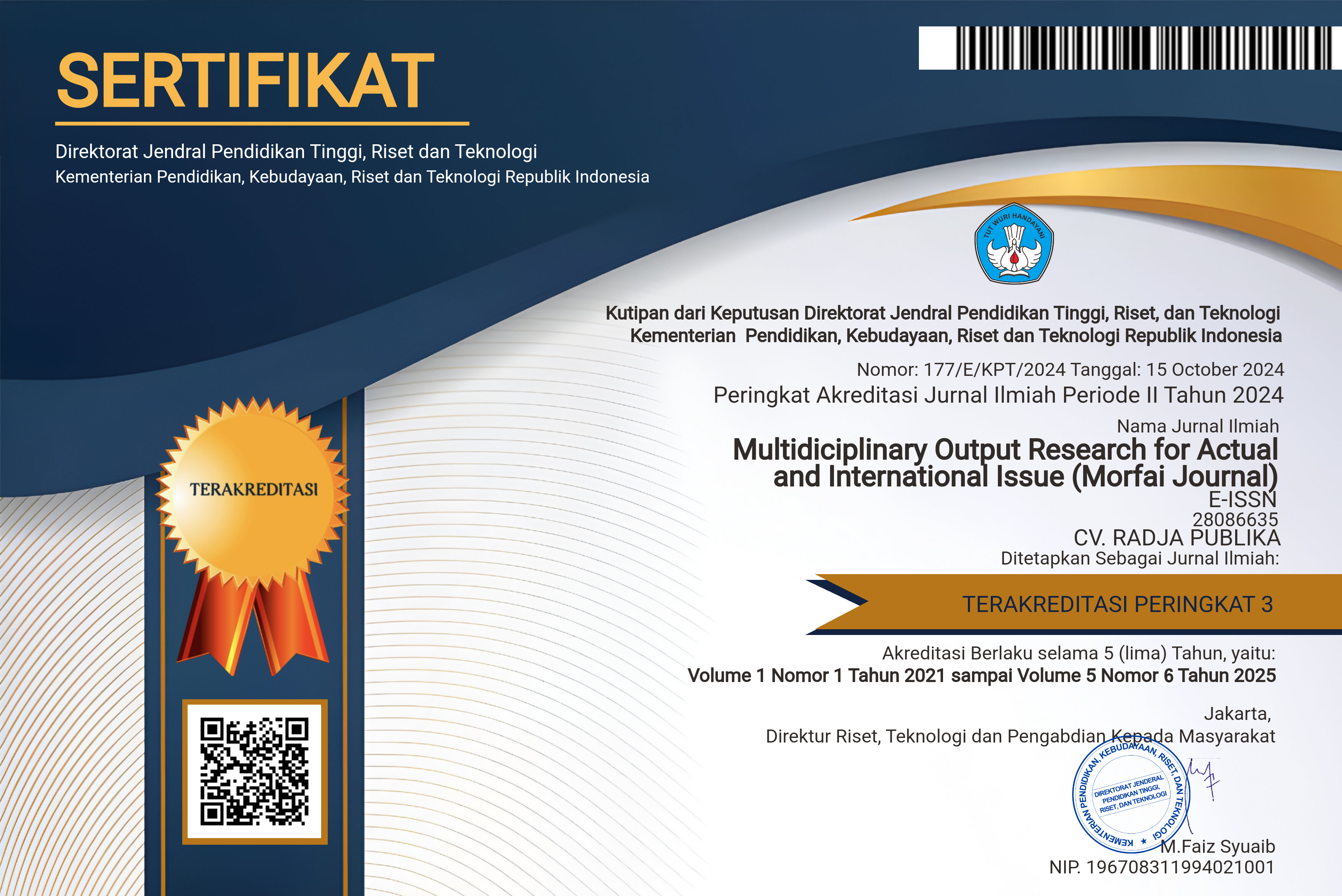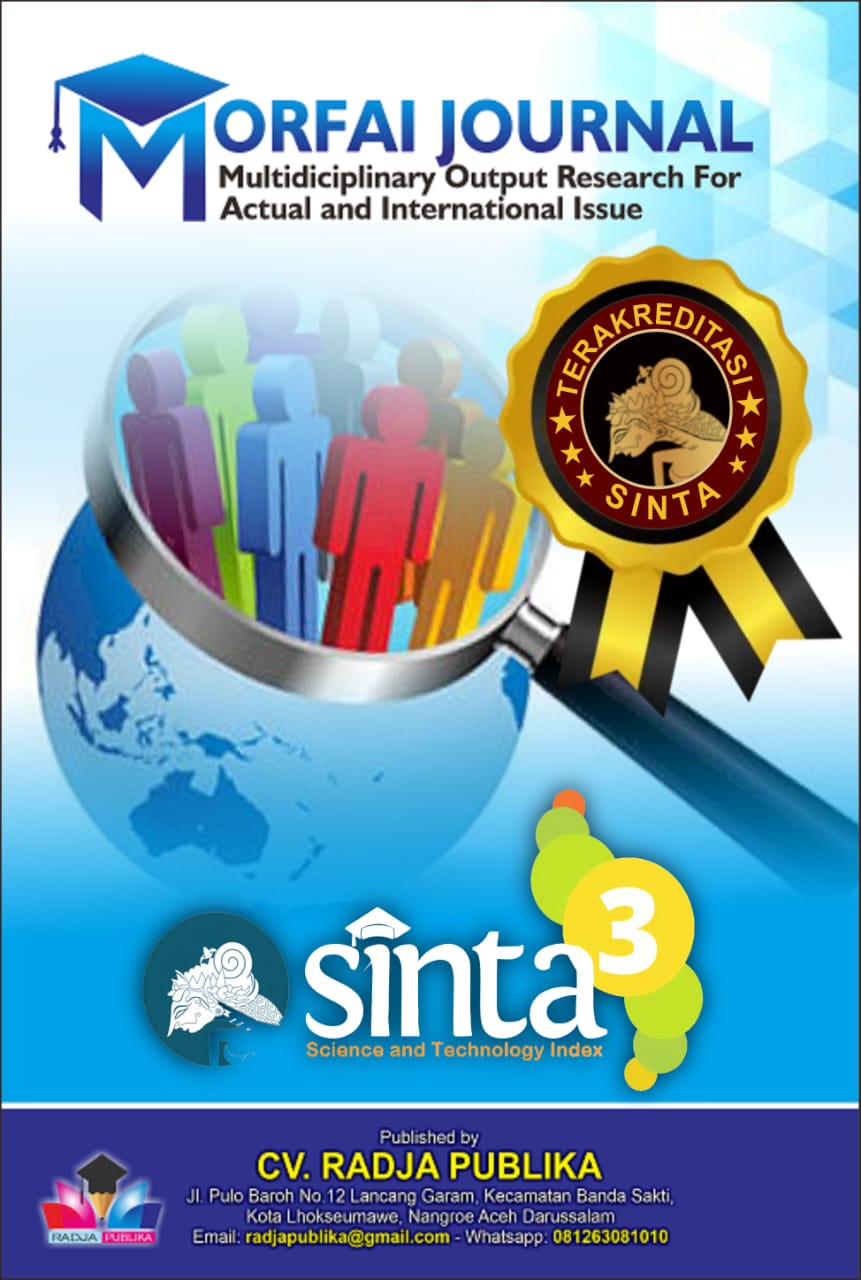EWOM RESEARCH DYNAMICS: A BIBLIOMETRIC ANALYSIS 2020-2025
Main Article Content
Riyan Falah Al Wahid
Retno Widowati
This bibliometric study analyzed the research dynamics of electronic word-of-mouth (eWOM) during the 2020–2025 period using data sourced from Scopus. The analysis revealed that Asia dominates publication contributions with 209 documents, where China, India, Indonesia, and Malaysia were identified as the main contributors. The pattern of international collaboration showed concentration around regional hubs such as the United States, China, and Indonesia, while cross-continental collaboration remained relatively limited. In terms of disciplines, business, management, and accounting remained the most dominant field (33.6%), yet there was a significant increase in contributions from environmental science and decision sciences, reflecting a shift in eWOM research themes toward issues of sustainability and environmental responsibility. The journal Sustainability Switzerland was identified as the most productive publication outlet, indicating the integration of eWOM themes within the discourse of sustainable development. This study not only updates the mapping of eWOM research post-2018 but also unveils the evolution of more interdisciplinary and sustainability-oriented themes that have not been identified in previous bibliometric studies
Abbas, A. F., Jusoh, A. B., Masod, A., & Ali, J. (2020). Bibliometric analysis of research trends on electronic word of mouth using scopus database. Journal of Critical Reviews, 7(16), 405–412. https://doi.org/10.31838/jcr.07.16.49
Abubakar, A. M., & Ilkan, M. (2016). Impact of online WOM on destination trust and intention to travel: A medical tourism perspective. Journal of Destination Marketing and Management, 5(3), 192–201. https://doi.org/10.1016/j.jdmm.2015.12.005
Ahn, J. J., Choi, E. K. C., & Joung, H. W. (2020). Does gender moderate the relationship among festival attendees’ motivation, perceived value, visitor satisfaction, and electronic word-of-mouth? Information (Switzerland), 11(9). https://doi.org/10.3390/INFO11090412
Aichouch, I., Kachbou, Y., Bouklah, M., & Merimi, C. (2025). Bibliometric analysis using VOSviewer: Analysis of Steel Corrosion using EIS. J. Mater. Environ. Sci, 16(3), 411–421.
Aimon, H., Zulvianti, N., & Abror. (2023). Do Sustainable Tourism Development, Psychological Safety, and Halal Friendly Destination Performance Lead to Tourist Electronic Word of Mouth? the Role of Tourist Satisfaction. International Journal of Sustainable Development and Planning, 18(4), 1167–1178. https://doi.org/10.18280/ijsdp.180421
Al-Gasawneh, J. A., Al-Dalaeen-al-balqa, J. A., Hasan, M. A., Ayat, A. M., Al-Rawashdeh, G. H., Mukattash, I. L., & Saputra, J. (2023). The moderating role of reliability on the relationship between electronic word of mouth and customer purchase intention in Jordanian real estate enterprises. International Journal of Data and Network Science, 7(2), 687–694. https://doi.org/10.5267/j.ijdns.2023.3.003
Almohaimmeed, B. (2020). The impacts of brand experiences on customer satisfaction and electronic word of mouth. Business: Theory and Practice, 21(2), 695–703. https://doi.org/10.3846/btp.2020.11965
Aslam, W., Farhat, K., & Arif, I. (2019). Role of electronic word of mouth on purchase intention. International Journal of Business Information Systems, 30(4), 411–426. https://doi.org/10.1504/IJBIS.2019.099304
Bag, S., Rahman, M. S., Srivastava, G., & Shrivastav, S. K. (2023). Unveiling metaverse potential in supply chain management and overcoming implementation challenges: an empirical study. Benchmarking, 32(11), 79–108. https://doi.org/10.1108/BIJ-05-2023-0314
Benavides-Sánchez, E. P., Moya-Clemente, I., & Ribes-Giner, G. (2025). Bibliometric analysis and systematic literature review of the relationship between sustainable development goals and sustainable entrepreneurship over time. Discover Sustainability, 6(1). https://doi.org/10.1007/s43621-024-00572-0
Bilal, M., Jianqiu, Z., Dukhaykh, S., Fan, M., & Trunk, A. (2021). Understanding the effects of ewom antecedents on online purchase intention in China. Information (Switzerland), 12(5), 1–15. https://doi.org/10.3390/info12050192
Chetioui, Y., Butt, I., & Lebdaoui, H. (2021). Facebook advertising, eWOM and consumer purchase intention-Evidence from a collectivistic emerging market. Journal of Marketing, 34(3), 220–237. https://doi.org/10.1080/08911762.2021.1891359
Chou, W., & Chow, J. C. (2024). Analyzing collaboration and impact. Medicine, May, 1–11.
Donthu, N., Kumar, S., Mukherjee, D., Pandey, N., & Lim, W. M. (2021). How to conduct a bibliometric analysis: An overview and guidelines. Journal of Business Research, 133(March), 285–296. https://doi.org/10.1016/j.jbusres.2021.04.070
Fiuza, T. F., Flores, L. C. da S., & Vivian, L. C. (2025). What will I share?-An evaluation of electronic word-of-mouth on service quality and the tourist experience: a case study in Bento Gonçalves, Rio Grande do Sul, Brazil. Journal of Tourism and Development, 48, 440–477. https://doi.org/10.34624/rtd.v48i0.35137
Gómez-Suárez, M., Martínez-Ruiz, M. P., & Martínez-Caraballo, N. (2017). Consumer-brand relationships under the marketing 3.0 paradigm: A literature review. Frontiers in Psychology, 8(FEB), 8–11. https://doi.org/10.3389/fpsyg.2017.00252
Guillot, R, Dubey, R. and K. (2024). B2B Supply Chain Risk Measurement Systems: A SCOR Perspective. Tourism Recreation Research, 19. http://researchonline.ljmu.ac.uk/id/eprint/8705/
Gupta, S., Modgil, S., Gunasekaran, A., & Bag, S. (2020). Dynamic capabilities and institutional theories for Industry 4.0 and digital supply chain. Supply Chain Forum, 21(3), 139–157. https://doi.org/10.1080/16258312.2020.1757369
Gvili, Y., & Levy, S. (2018). Consumer engagement with eWOM on social media: the role of social capital. Online Information Review, 42(4), 482–505. https://doi.org/10.1108/OIR-05-2017-0158
Haghani, M. (2023). What makes an informative and publication-worthy scientometric analysis of literature: A guide for authors, reviewers and editors. Transportation Research Interdisciplinary Perspectives, 22(September), 100956. https://doi.org/10.1016/j.trip.2023.100956
Hameed, I., Hussain, H., & Khan, K. (2022). The role of green practices toward the green word-of-mouth using stimulus-organism-response model. Journal of Hospitality and Tourism Insights, 5(5), 1046–1061. https://doi.org/10.1108/JHTI-04-2021-0096
Hassan, W., & Duarte, A. E. (2024). Bibliometric analysis: a few suggestions. Current Problems in Cardiology.
Hennig-Thurau, T., Gwinner, K. P., Walsh, G., & Gremler, D. D. (2004). Electronic word-of-mouth via consumer-opinion platforms: What motivates consumers to articulate themselves on the Internet? Journal of Interactive Marketing, 18(1), 38–52. https://doi.org/10.1002/dir.10073
Hu, X., & Yang, Y. (2020). What makes online reviews helpful in tourism and hospitality? a bare-bones meta-analysis. Journal of Hospitality Marketing and Management, July, 1–20. https://doi.org/10.1080/19368623.2020.1780178
Hua, X., Mohd Hasan, N. A., & De Costa, F. (2024). Leveraging Electronic Word-of-Mouth to Enhance Mobile App Consumer Satisfaction: The Mediating Role of Brand Awareness. Journal of Logistics, Informatics and Service Science, 11(2), 184–201. https://doi.org/10.33168/JLISS.2024.0212
Huete-Alcocer, N. (2017). A literature review of word of mouth and electronic word of mouth: Implications for consumer behavior. Frontiers in Physiology, 8(JUL), 1–4. https://doi.org/10.3389/fpsyg.2017.01256
Hussain, S., Ahmed, W., Jafar, R. M. S., Rabnawaz, A., & Jianzhou, Y. (2017). eWOM source credibility, perceived risk and food product customer’s information adoption. Computers in Human Behavior, 66, 96–102. https://doi.org/10.1016/j.chb.2016.09.034
Ilieva, G., & Boteva, D. (2023). Effects of electronic word-of-mouth (eWOM) drivers on customers’ behaviour. Eastern Journal of European Studies, 14(Special Issue), 58–78. https://doi.org/10.47743/ejes-2023-SI04
Ismagilova, E., Slade, E. L., Rana, N. P., & Dwivedi, Y. K. (2020). The Effect of Electronic Word of Mouth Communications on Intention to Buy: A Meta-Analysis. Information Systems Frontiers, 22(5), 1203–1226. https://doi.org/10.1007/s10796-019-09924-y
Kamble, S., Gunasekaran, A., & Dhone, N. C. (2020). Industry 4.0 and lean manufacturing practices for sustainable organisational performance in Indian manufacturing companies. International Journal of Production Research, 58(5), 1319–1337. https://doi.org/10.1080/00207543.2019.1630772
Kan, W. C., Chou, W., Chien, T. W., Yeh, Y. T., & Chou, P. H. (2020). The most-cited authors who published papers in JMIR mHealth and uHealth using the authorship-weighted scheme: Bibliometric analysis. JMIR MHealth and UHealth, 8(5), 1–13. https://doi.org/10.2196/11567
Lancho-Barrantes, B. S., & Cantú-Ortiz, F. J. (2019). Science in Mexico: a bibliometric analysis. Scientometrics, 118(2), 499–517. https://doi.org/10.1007/s11192-018-2985-2
Liu, T. L., Lin, T. T., & Hsu, S. Y. (2022). Continuance Usage Intention toward E-Payment during the COVID-19 Pandemic from the Financial Sustainable Development Perspective Using Perceived Usefulness and Electronic Word of Mouth as Mediators. Sustainability (Switzerland), 14(13). https://doi.org/10.3390/su14137775
Lrhoul, H., Turki, H., Hammouti, B., & Benammar, O. (2023). Internationalization of the Moroccan Journal of Chemistry: A bibliometric study. Heliyon, 9(5), e15857. https://doi.org/10.1016/j.heliyon.2023.e15857
Mahadevan, K., & Joshi, S. (2021). Trends in electronic word of mouth research: A bibliometric review and analysis. Indian Journal of Marketing, 51(4), 8–26. https://doi.org/10.17010/ijom/2021/v51/i4/158468
Mamata, C., & Kavilal, E. G. (2025). Exploring emotional intelligence and conflict management through a systematic literature review and bibliometric analysis. Journal of Advances in Management Research. https://doi.org/10.1108/JAMR-04-2024-0137
Manohar, S., Mittal, A., & Marwah, S. (2020). Service innovation, corporate reputation and word-of-mouth in the banking sector: A test on multigroup-moderated mediation effect. Benchmarking, 27(1), 406–429. https://doi.org/10.1108/BIJ-05-2019-0217
Muhuri, P. K., Shukla, A. K., & Abraham, A. (2019). Engineering Applications of Artificial Intelligence Industry 4 . 0 : A bibliometric analysis and detailed overview. Engineering Applications of Artificial Intelligence, 78(November 2017), 218–235. https://doi.org/10.1016/j.engappai.2018.11.007
Nadroo, Z. M., Lim, W. M., & Naqshbandi, M. A. (2024). Domino effect of parasocial interaction: Of vicarious expression, electronic word-of-mouth, and bandwagon effect in online shopping. Journal of Retailing and Consumer Services, 78(January), 103746. https://doi.org/10.1016/j.jretconser.2024.103746
Ninkov, A., Frank, J. R., & Maggio, L. A. (2022). Bibliometrics: Methods for studying academic publishing. Perspectives on Medical Education, 11(3), 173–176. https://doi.org/10.1007/s40037-021-00695-4
Ojiaku, O. C., Nwaizugbo, I. C., & Osarenkhoe, A. (2024). Role of Brand Familiarity on the Influence of Electronic Word-of-Mouth and Customers’ Behavioral Intentions. International Journal of Innovation and Technology Management, 21(6), 1–24. https://doi.org/10.1142/S0219877024500494
Park, S., & Park, H. W. (2020). A webometric network analysis of electronic word of mouth (Ewom) characteristics and machine learning approach to consumer comments during a crisis. Profesional de La Informacion, 29(5), 1–14. https://doi.org/10.3145/epi.2020.sep.16
Rabah, H. A., Dandis, A. O., Eid, M. A. H., Tiu Wright, L., Mansour, A., & Mukattash, I. L. (2024). Factors influencing electronic word of mouth behavior in higher education institutions. Journal of Marketing Communications, 30(8), 988–1012. https://doi.org/10.1080/13527266.2023.2201605
Rajalakshmi, A. R., Jayakani, S., Shanmugam, H., & Ramakrishnan, P. R. (2024). A Study on Green Entrepreneurship and Electronic Word of Mouth: Special Reference with Kanchipuram District. Indian Journal of Information Sources and Services, 14(3), 270–276. https://doi.org/10.51983/ijiss-2024.14.3.35
Rajendran, S., Srinivas, S., & Pagel, E. (2023). Mining voice of customers and employees in insurance companies from online reviews: a text analytics approach. Benchmarking, 30(1), 1–22. https://doi.org/10.1108/BIJ-12-2020-0650
Ray, A., Bala, P. K., & Jain, R. (2021). Utilizing emotion scores for improving classifier performance for predicting customer’s intended ratings from social media posts. Benchmarking, 28(2), 438–464. https://doi.org/10.1108/BIJ-01-2020-0004
Roy, K., Paul, U. K., & Mookherjee, A. (2025). Impact of eWOM credibility and persuasion on purchase intent: An empirical study. Intelligent Computing and Communication Techniques.
Sair, S. A., Majeed, A., RAHI, S., & Hafaz, A. (2020). Influence of Electronic Word Of Mouth (E-WOM) on Purchase Intention of Mobile Phones through Information Quality: Empirical Evidence from Pakistan. International Journal of Business Information Systems, 1(1), 1. https://doi.org/10.1504/ijbis.2020.10034026
Shankar, A., Jebarajakirthy, C., & Ashaduzzaman, M. (2020). How do electronic word of mouth practices contribute to mobile banking adoption? Journal of Retailing and Consumer Services, 52(June 2019), 101920. https://doi.org/10.1016/j.jretconser.2019.101920
Sharma, P., & Lichtenthal, J. D. (2023). Scenarios for optimizing timing for new product exits: a trifecta of models’ predictive performances. Benchmarking, 30(5), 1506–1535. https://doi.org/10.1108/BIJ-01-2022-0038
Shirvani, S. M., Motamedi, N., & Mohtaram, R. (2020). The effect of country-of-origin on the consumer purchase intention considering the mediating role of the brand equity dimensions. International Journal of Business Information Systems, 35(3), 363–377. https://doi.org/10.1504/IJBIS.2020.111418
Shu, Z., Llorens-Marin, M., Carrasco, R. A., & Romero, M. S. (2025). Customer Electronic Word of Mouth Management Strategies Based on Computing with Words: The Case of Spanish Luxury Hotel Reviews on TripAdvisor. Electronics (Switzerland), 14(2). https://doi.org/10.3390/electronics14020325
Tabassum, S., Khwaja, M. G., & Zaman, U. (2020). Can narrative advertisement and eWOM influence generation z purchase intentions? Information (Switzerland), 11(12), 1–16. https://doi.org/10.3390/info11120545
Tam, N. D., Hiep, P. M., & Lan, L. T. M. (2025). A Bibliometric Analysis of Electronic Word-of-Mouth in Tourism: A Review and Identification of Future Research Themes. Asian Journal of Business and Accounting, 18(1), 271–304. https://doi.org/10.22452/ajba.vol18no1.9
Tang, M., & Kim, H. S. (2022). An Exploratory Study of Electronic Word-of-Mouth Focused on Casino Hotels in Las Vegas and Macao. Information (Switzerland), 13(3), 1–21. https://doi.org/10.3390/info13030135
Thakur, C. K., Sai Vijay, T., & Chatterjee, T. K. (2022). A Study on Travelers’ Motivation to Provide Online Reviews. Indian Journal of Marketing, 52(2), 8–22. https://doi.org/10.17010/ijom/2022/v52/i2/164156
Tiwari, S. (2021). Supply chain integration and Industry 4.0: a systematic literature review. Benchmarking, 28(3), 990–1030. https://doi.org/10.1108/BIJ-08-2020-0428
Tobon, S., & García-Madariaga, J. (2021). The influence of opinion leaders’ ewom on online consumer decisions: A study on social influence. Journal of Theoretical and Applied Electronic Commerce Research, 16(4), 748–767. https://doi.org/10.3390/jtaer16040043
Yadav, A., Singh, R. K., Mishra, R., & Bag, S. (2024). Perceived challenges affecting user engagement in online community: an analysis of interrelationships and interaction. Benchmarking, 31(4), 1320–1349. https://doi.org/10.1108/BIJ-11-2022-0710










